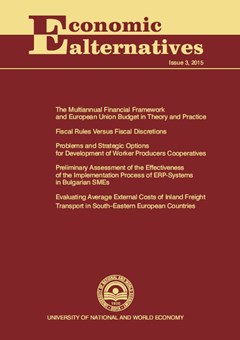The Multiannual Financial Framework and European Union Budget in Theory and Practice
Author: Svetlana Kineva
Abstract
The article studies the Multiannual Financial Framework as well as the annual common budget of the European Union. The budget of the European Union is an important instrument for the implementation of the European Union`s priorities and putting policies in place. It provides the opportunity to finance projects and actions that member states cannot fund by their own resources. The Multiannual Financial Framework sets political priorities for the future – the political and budget framework. The system of own resources shows where the financing of the EU budget comes from. The contribution of each member state to the EU budget is calculated based on the own resources system. The discharge procedure is aimed at closing the annual budget cycle. Both legal and historical perspectives of the MFF and the EU budget are analysed. However, the theoretical issues inevitably raise practical aspects of the adoption of the MFF 2014 – 2020, 2015 and 2016 Annual Budgets. It is noted that the Treaty on the Functioning of the European Union has introduced new tools in the budgetary sphere. Outstanding problems linked to the payments, own resources and the budget implementation are also identified. In conclusion, the Plan for Jobs, Growth and Investment is briefly presented because of the new budget "vision" of the now acting European Commission.

